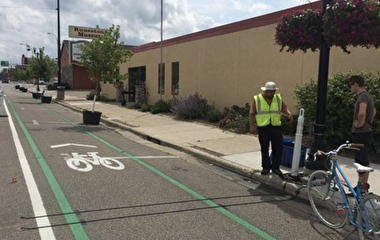
The COVID-19 pandemic drove a massive shift to working from home, dramatically reducing the number of vehicles on our nation’s roadways. Even now, the remote work trend is presenting major challenges and opportunities for both employers and employees while simultaneously reshaping transportation. In a special CTS webinar, experts highlighted these trends and explored how telecommuting could shape the future of transportation.
“Long before the pandemic, I’d been working to expand telecommuting because it is a win-win-win for employers, employees, and communities,” said Adeel Lari, director of the Institute for Urban and Regional Infrastructure Finance at the Humphrey School of Public Affairs. “COVID-19 led the world to go remote and suddenly there was no congestion. Now it’s the time to remember the saying ‘Never let a crisis go to waste.’”
According to Lari, the actions companies and organizations take now will determine whether the pandemic’s traffic reduction can be sustained. “At this point we don’t know what types of lasting change this will create for employees and companies,” he said. “We need to partner with those companies and organizations that are already making long-term changes and further encourage others less inclined to make desirable changes.”
In addition, Lari pointed out the many inequities in remote work; data show telecommuting opportunities are much less available to Hispanic and Black workers, workers without college degrees, low-income workers, and women. “We have already seen that low-income and minority communities were more severely impacted by COVID-19 due to a limited ability to work remotely and limited transportation options,” Lari said. “We need policies that do not leave anyone behind and prevent the creation of an even wider gap between the haves and the have-nots.”
Transit organizations such as Metro Transit have seen the impact of the pandemic on their ridership patterns, with the near elimination of weekday commute peaks. “What we see today is a ridership pattern that slowly builds throughout the day, similar to a weekend,” said Kristin Thompson, Metro Transit assistant director of service development. “In response, we are focusing on strengthening service for all-purpose trips and building out the METRO network to meet the needs for all-purpose, all-day travel.”
At the local level, there is no one-size solution for the lasting effects of COVID-19. League of Minnesota Cities Executive Director David Unmacht observed that the pandemic’s effects were not felt equally across all local governments. “Transformational change is happening, but we can’t yet conclude what the end game will be,” he said. “The impact of the pandemic was very different from city to city, even among cities of the same size across the state depending on their economic conditions, organization, and leadership.”
At the state level, Minnesota Department of Transportation (MnDOT) leadership is considering how to lead by example and continue to leverage the positive impacts of telework and hybrid work. “As we went through the pandemic, we were already thinking about how we could document our experience with telework for future use,” said Katie Walker, MnDOT director of innovation and research. “Our goals for telework are to be an employer of choice and an industry leader, to create a positive impact on our business needs, performance, and customer satisfaction, and to improve the environment and community.”
Writer: Megan Tsai


